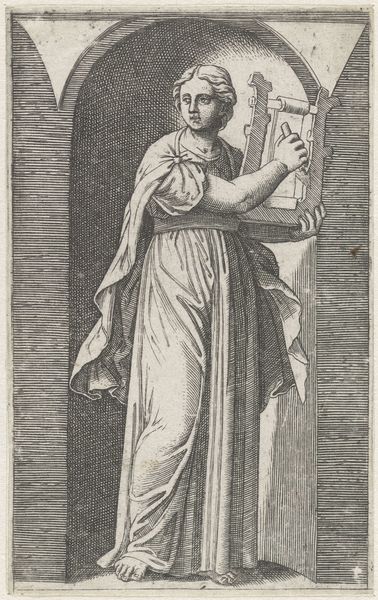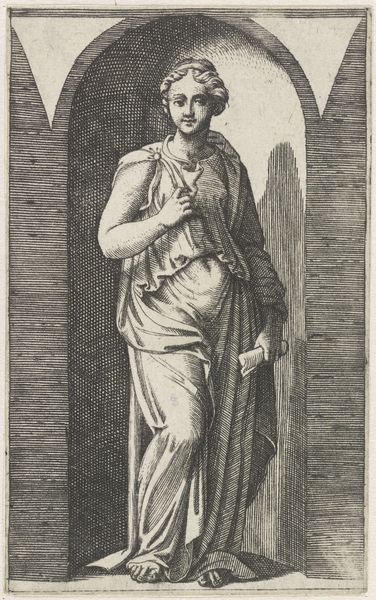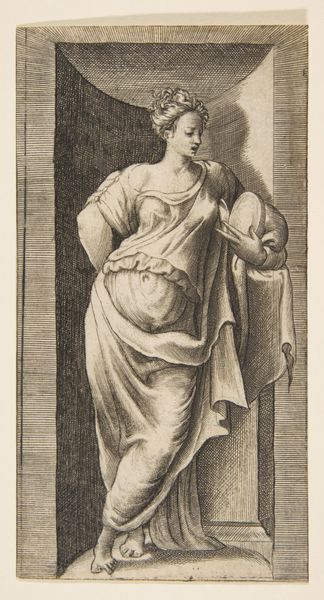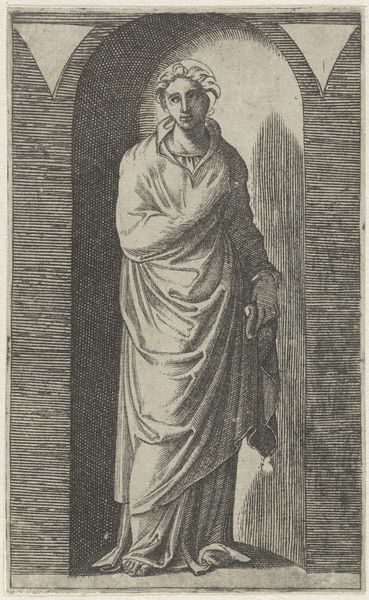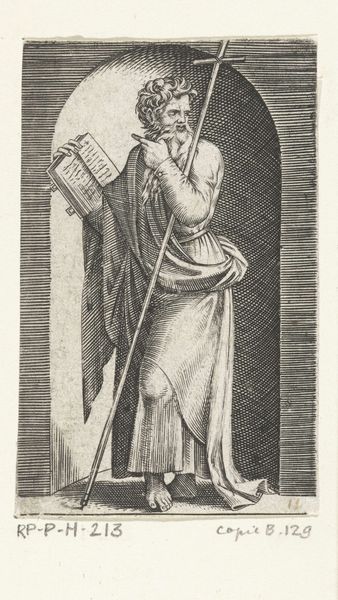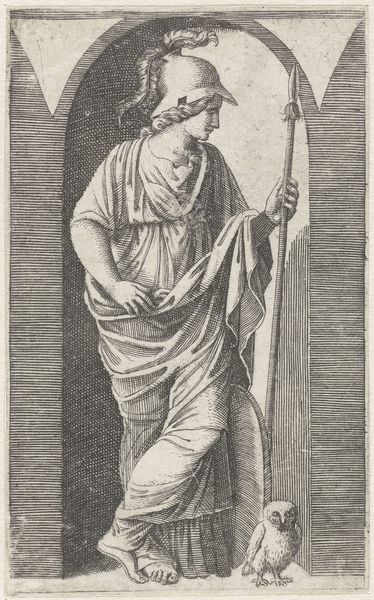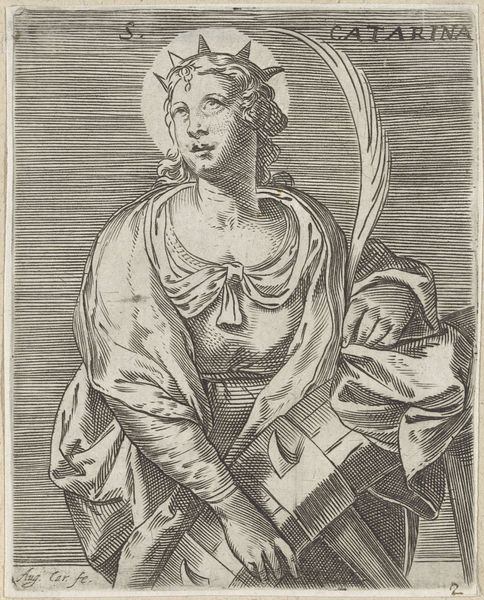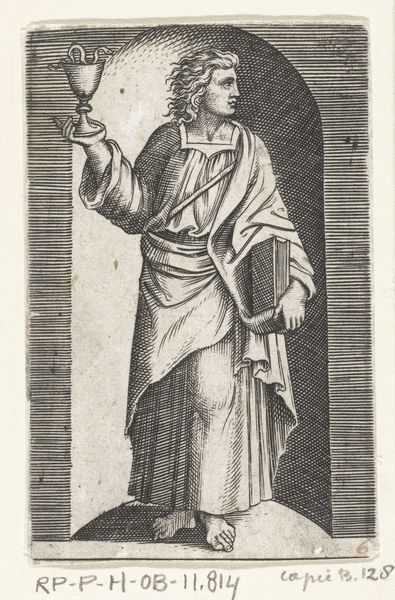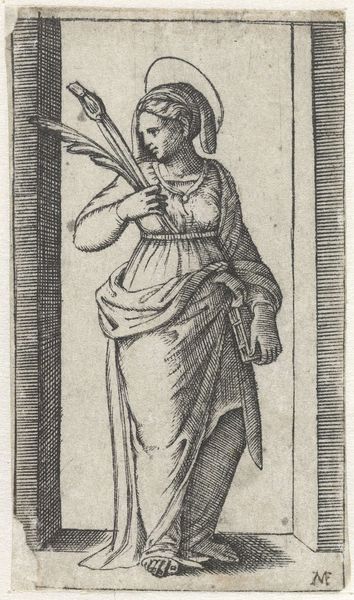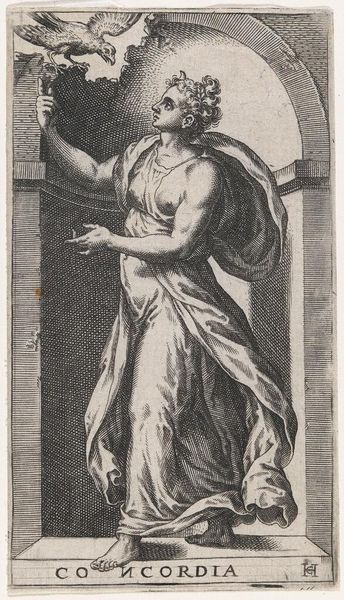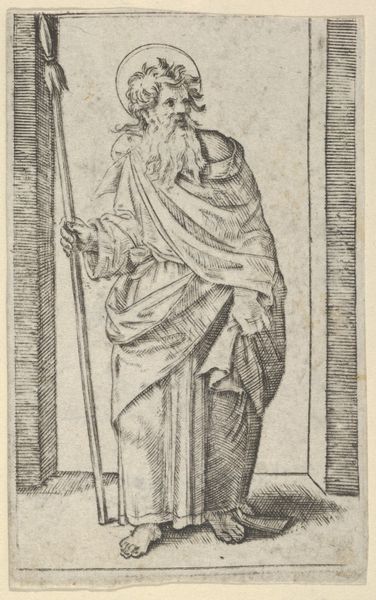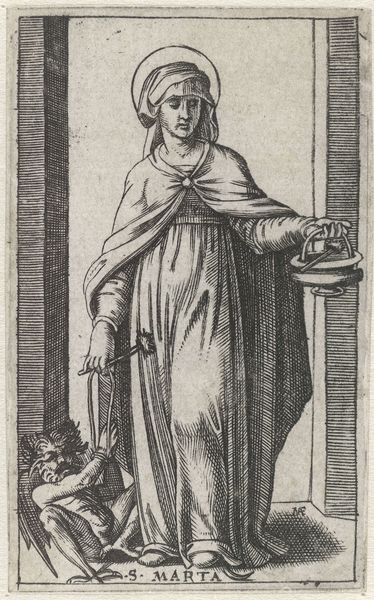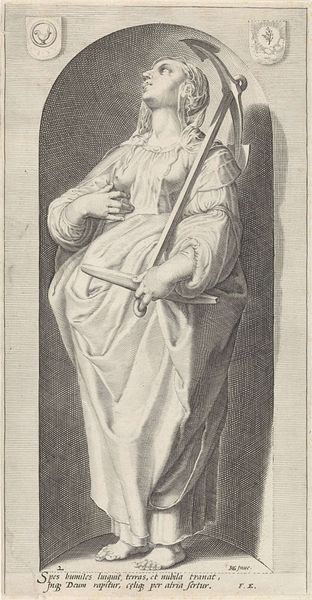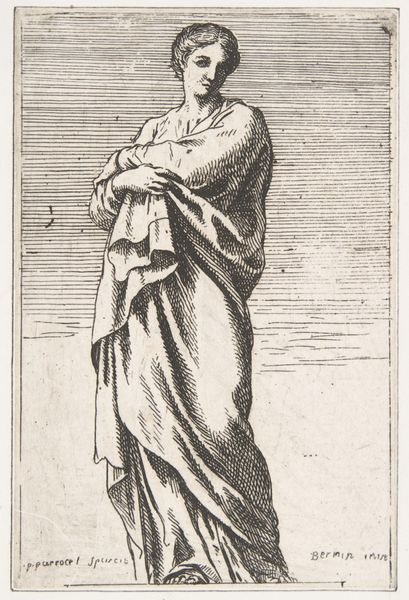
Diana holding fruit in her left hand standing within a niche 1526 - 1536
0:00
0:00
drawing, print, etching, engraving
#
portrait
#
drawing
#
allegory
# print
#
etching
#
figuration
#
fruit
#
italian-renaissance
#
engraving
Dimensions: sheet: 6 5/8 x 3 3/8 in. (16.9 x 8.6 cm)
Copyright: Public Domain
Curator: Here we have Giulio Bonasone's "Diana holding fruit in her left hand standing within a niche," made between 1526 and 1536. It's a print, combining etching and engraving techniques, and currently resides at the Metropolitan Museum of Art. Editor: She looks like she means business! Almost severe. It’s an austere scene, even though she’s holding…what are those? Little apples? The niche gives the impression she's in a constricting box. It’s dramatic. Curator: Right. It's interesting how Bonasone uses the engraving to create a range of tonal values and textures. If you look closely, the lines vary in thickness and direction, suggesting the play of light on her draped clothing and creating the illusion of three-dimensionality. The availability and price point of these prints allowed Bonasone’s art to reach a wide and very varied audience in the Italian Renaissance, compared to expensive sculptures that only rich individuals could enjoy. Editor: Thinking of that accessibility is mind-blowing. Before digital distribution, before the printing press dominated...a relatively inexpensive, replicable image like this would ripple outward. But why Diana? And why *that* fruit? What narratives did Bonasone expect to get triggered in the audience’s mind when they look at this? Curator: Diana, of course, is the Roman goddess of the hunt, the moon, and nature. Her presence signifies purity, but more interestingly the production and access to this type of mythological imagery was very carefully overseen in this period, especially during the papacy of Clement VII in Rome. Editor: You're right – everything is intentional, every detail has an undercurrent of significance…I appreciate how it all invites us to contemplate female strength and maybe challenge the rigid roles, for female people during that time and also nowadays! Curator: Absolutely. We see through its very means of production—printmaking—a commentary on both art and society’s values that time, on accessibility, and dissemination of imagery for varied audiences. Editor: Thinking about this image existing over time makes my head spin! But, I feel grounded with this fresh understanding. Thank you!
Comments
No comments
Be the first to comment and join the conversation on the ultimate creative platform.
